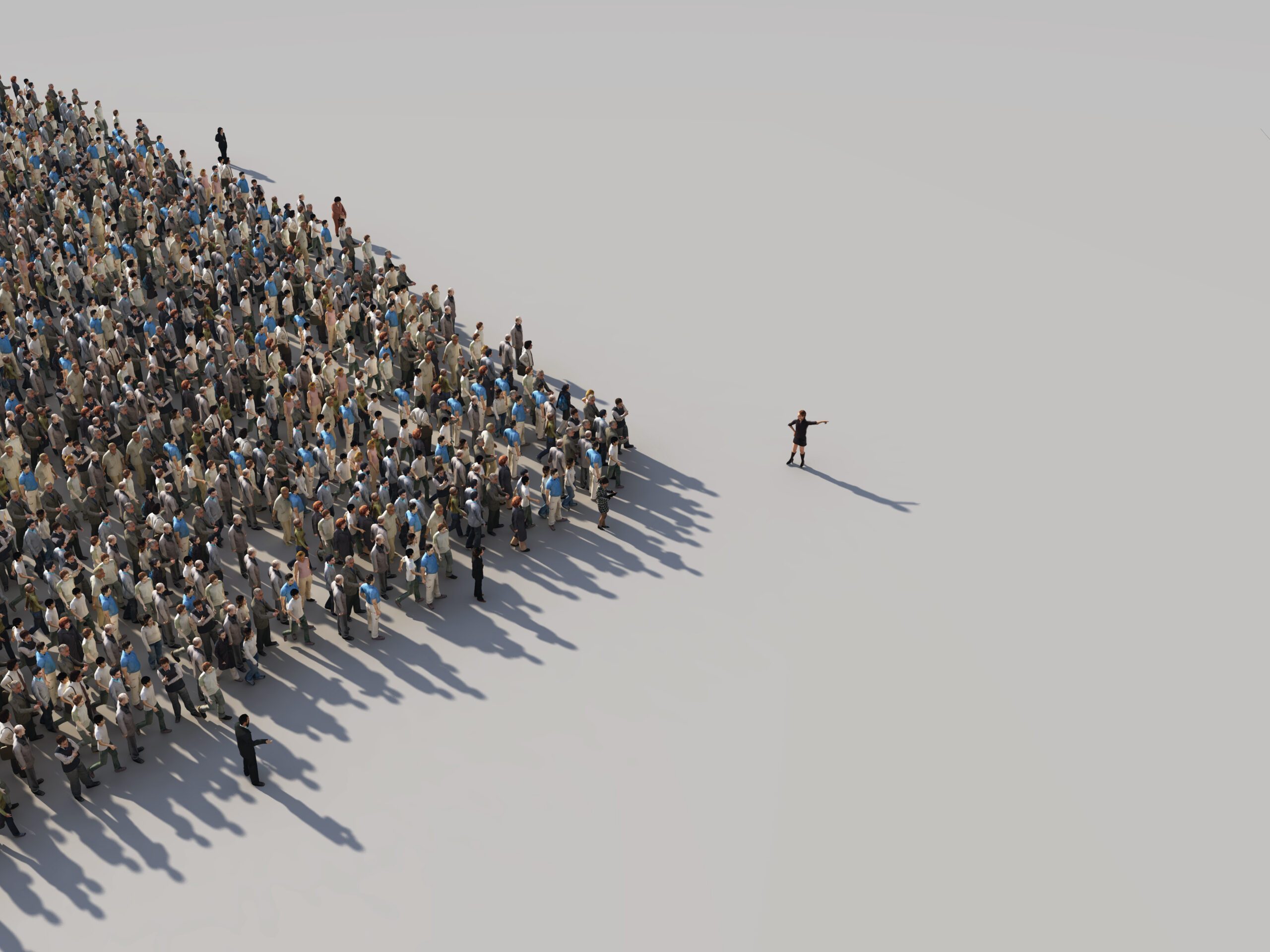Leadership has never been an easy task and in times of turmoil, mankind always looks to strong leadership for guidance. One can argue that apart from more localised natural disasters such as tsunamis or earthquakes, the COVID-19 pandemic has put the world’s leadership to its biggest test, certainly since World War II. Never have people been faced with such impactful changes to the three fundamental spheres of interaction, which are: family, work and social. These spheres need leaders to function well, but leaders have been affected by the pandemic too and have been challenged by its changes as much as their teams. These, however, can be small changes, like a family deciding what colour to paint the living room (there can very well be passionate debates on this), a people leader deciding who works when and for how long (this decision is not to be taken lightly as it impacts many lives) or a decision on how to spend the surplus budget of a social club (believe it or not, clubs have disintegrated during these debates). There is no change that is too small to be trivial and meaningless. Because humans think differently to each other, this could easily mean they don’t agree with the leader’s decision and therefore challenge them on just about any topic at hand. It’s imperative therefore that the leader in question focusses on the one constant: the bigger picture.
COVID-19 has shown leaders the bigger picture and as such disrupted the social fabric of the three basic spheres of interaction – family, work and social.

Human shortcomings limit modern leadership
If we boil it down, humans can be described as walking, mostly water-based, fast 3D processing computers. Our ability to process our environments in combination with our brain, has put homo sapiens on the apex of current evolution on planet earth.
But with our 3D processing capabilities, we still lack the ability to think of our world as a multi-threaded, multi-person, highly situational operating model of the real world. People cannot fathom what their closest partners are doing once they leave the line of sight. We lack the ability, despite our phenomenal brain capacities, to imagine where another person is, what they experience and what they feel in the very same moment. In person however, when a person is in our line of sight, we are very good at this, or at least can be very good at this if we want to be.
We are also very aware of our need for self-preservation, which still prompts the fight v flight reaction when we process some information, even though for all practical purposes, neither of those reactions are applicable in all but the most extreme circumstances. In daily life situations, we need to moderate our primal reactions often.
Moreover, we have numerous personality profiles and depending on the topic at hand, we tend to simplify them into two categories: extroverts and introverts. Explicit ways of communication rule most of our interactions, favouring the extroverts, and often ignoring and overlooking the introverted members of an interaction sphere.
Finally, especially in challenging times, we have the ingrained desire and wish to look for the ‘strong’ leader. Luckily in 2021 we are past gender stereotypes (wait – really?) looking for that leader. It simply is our programming from the most defining years of homo sapien development, where the small hordes needed leadership to survive. Like it or not the desire for the strong leadership is most prevalent in tumultuous times like ours.
What are the key change drivers for 2021 and beyond?
Remember when the biggest challenge of leadership was the multi-generational workforce co-existing in the same office? Longer working careers is just a mathematical coincidence when we have three or four generations in the same workforce. Instead, we talk about resilience as we realise that families and work – and hopefully social aspects too – need to keep going, no matter what, and have to become more resilient.
So, what has changed? And what is testing leaders right now?
• People and families are struggling: most people work to live and their family is the ultimate priority, not work. With families battling to meet material challenges, quarantines, home schooling and more, people are struggling, and successful leaders need to recognise that.
• Working from home has changed the workplace fundamentally: work used to be this quasi-ceremonial process of commuting, working, meals and returning home, maybe via a pub. This ritual has imploded and no longer exists for most people. Leaders see their proven leadership skills become obsolete in a day and it takes months to come up with new and successful leadership skills and strategies.
• The social fabric is brittle – and definitely different: humans need personal and social interactions to thrive. These have never changed so dramatically and abruptly as during the last 15 months.
• Business processes have changed: enterprises needed to reinvent themselves and find new ways to operate. Leaders often had to implement new processes at a massive rate of change, but often had to lead the experimentation of new ways to operate.
• New tools have become essential: all physically interactional spheres have changed, moving to digital and remote, bringing along a new set of tools to master. Equally, new business processes require a period of un-learning, re-learning and new learning.
• Work/life balance has shifted: with work being only a few steps away, uncertainty on enterprise and personal prospects, people have moved towards working longer, putting their work/life balance out of sync. Maintaining this long-term will only drain their energy reserves in all spheres of their lives.

The pandemic challenges shift the universal leadership characteristics
There are many leadership skills and traits which can be combined into four universal leadership characteristics, defining leaders as:
• Leaders as role models: good leaders are honest, show integrity, are confident, have expertise, are reliable and stable, demonstrate accountability, are motivated, positive, excel at working with people and lead their teams with inspiration and by example.
• Leaders as relationship builders: the better leaders build relationships with their team members through effective listening, empathy for their situation, respect for their feelings, are self-aware and generously show gratitude.
• Leaders as creative problem solvers: successful leaders find new and better solutions where their people get stuck, even if it requires taking a risk, but they will manage to deliver success with their people.
• Leaders as bettermakers: truly great leaders make the people in their teams better. They are great delegators, foster creativity and act as team builders and mentors.

There are seven actions leaders can take to deal with new situations. They can be taken in various combinations to tackle a leadership challenge (in alphabetical order):
1Adopt: leaders will identify a new challenge and adopt new ways to understand it and master it. For example, use new tools to build relationships with the team (e.g. Slack, Teams etc.) and adopt new problem-solving techniques (e.g. using Slido for polling of a remote team).
2 Coach: leaders will coach their people as needed. For instance, leaders will coach team members on new processes and new tools, both being a role model and a bettermaker.
3 Foster: leaders will foster the situation of their people, for example to the struggles families go through or foster the work/life balance challenges of team members when it comes to how problems are solved.
4 Innovate: leaders will serve as innovators, for instance, how to build relationships in times where traditional social fabric is failing, e.g. as people cannot physically attend a sports event, watch it together as a team via video conferencing apps.
5 Lead: to lead is evidently the core action of a leader that most prominently must be displayed during times of workplace change. A leader should be both a role model in the way he/she builds relationships as well as how problems should be solved.
6 Reflect: leaders need to reflect on the situation their team members find themselves in, for example when it comes to struggles in the family life of a team member, or when it comes to understanding how the brittle social fabric affects the ability of their people to be part of problem solving.
7 Respect: leaders need to respect their team members. For example, when it comes to understanding their views for work/life balance when building relationships and their brittle social fabric when it comes to the role of bettermaker.

The takeaways
Leaders of today face their biggest challenges on how to lead their people due to the changes the global pandemic has brought about. They need to lead their teams through challenging and daunting times, with no hesitation and a steadfast approach that gives their people a sense of success at work; all the while satisfying their primal need for a strong leader in tumultuous times. But leaders by themselves are challenged by the changes the pandemic has brought along as well. They therefore need to process and reflect these first in order to become and remain the successful leaders that enterprises need to find the path to enterprise acceleration in these unprecedented times. There are many reasons why enterprises need to treat their leaders in middle management better than ever before.




